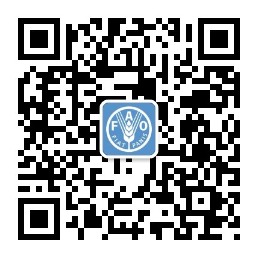Delivering shock-responsive social protection to farmers and fishers in the Philippines

The Bangsamoro Autonomous Region in Muslim Mindanao (BARMM) in the Philippines faces persistent socioeconomic and environmental challenges. In 2020, 81 percent of the population could not meet basic needs, and by 2021, the poverty rate stood at 29.8 percent – more than twice the national average. Decades of conflict, despite a 2014 peace agreement, continue to drive displacement and disrupt livelihoods. The region is also highly vulnerable to natural hazards, including floods, landslides and earthquakes, further exacerbating food insecurity and economic instability.
Agriculture remains central to BARMM’s economy, employing 60.4 percent of the workforce. However, shocks such as the COVID-19 pandemic and extreme weather events have severely affected the sector. While BARMM recorded a lower COVID-19 infection rate than the national average, the economic repercussions were significant. In 2022, Typhoon Nalgae (Paeng) caused extensive damage, affecting 557 000 people, displacing 102 000, and devastating homes, infrastructure and agricultural activities – especially in Maguindanao.
This good practice factsheet documents two FAO interventions implemented between April 2021 and December 2022 to support farmers, fishers and their households. The first intervention expanded social protection coverage to those not receiving assistance to mitigate the socioeconomic impacts of COVID-19. The second enhanced flood response efforts by temporarily increasing assistance to affected farmers and fishers through BARMM’s social protection system. These initiatives demonstrate the potential of risk-informed, shock-responsive social protection in strengthening resilience and reducing poverty in crisis-prone regions.
SOME KEY TAKEAWAYS
On social protection: The negative impacts of shocks increase the likelihood of vulnerable groups falling back into poverty. Access to shock‑responsive social protection contributes to contrast persistent poverty and provides a safety net in times of crisis. However, a functioning national social protection system is an essential precondition for implementing risk-informed and shock‑responsive interventions at scale. This offers the opportunity for external humanitarian assistance to be anchored in national plans, strategies and norms to ensure a clear mandate and alignment with government priorities. At the same time, this increases the cost-effectiveness of aid because it does not require the setup of costly parallel systems. In the Philippines, FAO used the government social protection programmes to deliver emergency assistance, and this approach helped to test and strengthen the national social protection system, promoting legitimacy and ownership by the national and local administration.
On targeting: The targeting mechanisms used to identify beneficiaries of social protection systems should be dynamic and interoperable to respond to changes in circumstances caused by covariate shocks. Most social and farmer registries are static, and the information contained rapidly becomes outdated, especially if households are affected by shocks. As a result, in the case of major typhoons, the COVID-19 pandemic or any severe shock, the newly and near‑poor risk to be systematically excluded from any form of support. There is little difference in the circumstances of people who live just above the poverty line and those who live just below it. Even minor shocks can rapidly change their living conditions and suddenly increase the number of households living in poverty. Risk-informed and shock-responsive social protection systems need dynamic targeting systems that link, for instance, social and farmer registries. This allows to reach the most vulnerable in times of crisis as well as support those at risk of becoming poor as a result of the crisis.
On inclusive climate action: BARMM is subject to flooding, landslides, coastal erosion, tsunamis, earthquakes, volcanic eruptions, drought and other climate-related phenomena linked to El Niño, which threaten lives and agricultural livelihoods. In 2022, after typhoon Nalgae, small-scale food producers reported widespread degradation of ecosystems and disruptions to their activities, including damage to crops and fishing boats and death of livestock. FAO's work in the Philippines to link social protection, climate action and disaster risk management on the one hand contributes to protect and restore agricultural livelihoods in the face of shocks, focusing on the poorest and most vulnerable. On the other hand, it helps smallholder farmers and fishers to build resilient and sustainable livelihoods that can adapt to climate change and break the cycle of chronic poverty.
On humanitarian-development-peace nexus: Risk-informed, shock-responsive social protection can be an effective tool to bridge the gap between humanitarian and development approaches. FAO’s efforts in BARMM represent a powerful example of how partnerships between governments and external organizations to strengthen national social protection systems provide opportunities to implement humanitarian operations in a more inclusive, conflict-sensitive and sustainable way. In this and in similar contexts, FAO has a crucial role to play and a comparative advantage in supporting the collaboration between national ministries or departments of agriculture, social welfare and disaster risk management, thereby ensuring continuous, productive and flexible support to farmers, reducing chronic rural poverty and protecting food security in times of crisis.


